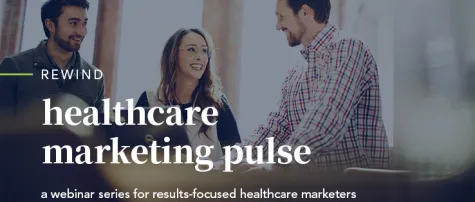Read
the generation fallacy in higher education marketing
what’s really influencing the prospective student’s journey

You’re too focused on the generation of your audience. Everyone in higher education marketing and admissions is too focused on generation.
I understand why. It’s near impossible to avoid the headlines, case studies, and webinars explaining how prospective student expectations have evolved as Millennials pass the torch to Gen Z. “But what does that mean for you?” the experts ask, implying a promise to answer.
I’m here to tell you it’s all clickbait. Generational shifts aren’t driving the evolution of student expectations, just as generational shifts aren’t driving consumers to choose Amazon over big box stores.
So, what’s influencing prospective student behavior and dismantling the long-recognized norms of higher ed? Consumerization. And it’s the marketing and admissions leaders who take a page from consumer-centric brands that will successfully navigate this shift.
the consumerization of higher education
The Amazon Effect
/T͟Hē,T͟Hə/ /ˈaməˌzän,ˈaməzən/ /əˈfekt/
noun
- The ongoing evolution and disruption of the retail market, both online and in physical outlets, resulting from increased e-commerce. The name is an acknowledgement of Amazon’s early and continuing domination in online sales, which has driven much of the disruption.
In 1995, Jeff Bezos launched Amazon with a clear, concise, and incredibly ambitious vision: to be earth’s most customer-centric company; to build a place where people can find and discover anything they might want to buy online. Over the last 25 years, Bezos has delivered on that vision.
You know the results. If not through your role as a marketing or admissions leaders, then as a consumer. In all transactions, our expectations have never been higher. In retail, we expect numerous reviews to inform our research process. We expect an offer to incentivize us on top of fast and free shipping. We expect real-time notifications of transaction, shipping milestones, and delivery. And if anything doesn’t meet our expectations along the way, we expect friendly and personalized customer support to remedy the issue.
The effects of consumerization aren’t isolated to retail. In fact, it’s easy to argue they’re magnified in high-value-exchange sectors such as higher ed. Students and their families are, in many cases, on the verge of making the biggest investment of their lives. The proliferation of information and effects of consumerization mean your buyers—prospective students—are seeking as much information as possible to inform their decision.
Viewing prospective student behavior trends through the lens of your own consumer expectations brings clarity.
In their 2018 E-Expectations Trend Report, Ruffalo Noel Levitz and OmniUpdate report that 10% of seniors and 16% of juniors remove a school from consideration if that school’s website experience is frustrating. Beyond that, 28% of seniors and 36% of juniors turn to third-party sources if they encounter a frustrating web experience. Now look in the mirror. When you face a frustrating experience while investigating or making a purchase, how much does that impact your ultimate decision?
Applications per enrollment for full-time freshmen jumped from 3.3 to 5.3 at public institutions and 3.8 to 7.3 at private ones over the last decade. Admits per enrollment, unsurprisingly, also grew: 2.2 to 3.3 at public institutions and 2.4 to 4.1 at private ones. As a consumer, it’s completely normal to price shop, isn’t it? Yes, it is – especially when organizations like the Common App are making it easier to apply to more universities.
In short, prospective students are becoming more pragmatic in their decision-making. They’re asking more nuanced questions about topics like affordability. “Can I afford this school right now? Can I afford the long-term debt? Will it all be worth it?”
But in their shoes, with all the information available to you, wouldn’t you ask the same questions? And while we don’t have to get into the specifics of age, I’m confident you don’t belong to Gen Z, born in the mid-1990s to mid-2000s.
the new student journey
As a byproduct of consumerization in higher ed, prospects are casting a wider net and using the application to gather information, often completely foregoing traditional requests for information. This is causing major issues for higher ed leaders who’ve traditionally relied on applications and admits as leading indicators of enrollment. The traditional linear model simply no longer exists for many institutions.
In the past, most institutions could count on a traditional funnel of activity from prospect through inquiry, inquiry through application, application through admittance, and admittance through enrollment. Sure, volume diminished as prospective students progressed through the funnel, but the percentages of prospects passing from one stage to the next would largely remain consistent from year to year.
That consistency made goal setting a relatively simple and stable process. But as we see demonstrated through the modern prospect’s discerning mindset and wide-net approach to application, the traditional enrollment funnel doesn’t work today.
Instead, I strongly advocate enrollment marketing and admissions leaders view the funnel through the eyes of the prospective student. Here’s how prospects are processing the journey from high school to college:
“Where can I see myself?”
At this stage, high school sophomores, juniors, and seniors are scouring your website, social media, and college planning sites to learn as much as they can about the programs you offer, life on campus, expected career outcomes, and available career services support.
From a prospect’s perspective, the traditional awareness, inquiry, and application stages are all rolled up into answering this one question: “Can I see myself attending __?” If the answer is yes, you’re lucky enough to receive an application.
“Where did I get in?”
As admittance letters roll in, the true consideration begins. Prospects begin to check items off their list: FAFSA status, cost of deposit, orientation schedule, registration process, and housing options. This is a critical time for institutions: prospective students are making the most important decision of their lives, and they do not take it lightly.
“What offers do I have to consider?”
Based on the information collected up to this point, accepted prospects are answering the question, “Will it all be worth it?” Based on financial aid status, prospective students are making deposits and scheduling orientations. In fact, some prospective students are double-depositing, sending the traditional enrollment funnel into further disarray.
Double-depositing is typically done for one of two reasons: securing a spot at a fallback school while waiting on a wait-list status or securing a spot at a fallback school while negotiating a better financial aid package at their first choice. Many consider it unethical, but it’s happening.
“What’s the best fit for my unique circumstances?”
Potentially attending multiple orientations, prospective students are trying to determine if they feel comfortable: with the on-campus experience, with faculty and staff, and with the financial decision they must make. Fit is a broad standard for prospective students, and on-campus orientation plays a key role in confirming their suspicions.
“This is the school for me!”
For prospects today, who more than anything want to be known, it’s critical they feel a personal connection with their university of choice. Whichever institution can cut through the clutter, react to the information provided, and build a bond is most likely to earn the enrollment.
obsess over the student
If you’re a higher education marketing or admissions leader trying to meet the needs of modern prospects and increase class size at your institution to achieve the goals of your president, my advice to you is simple:
Don’t obsess over applications. Don’t obsess over yield rate. Obsess over your ideal students. Every one of them. Just like Amazon would (and does).
To be successful in recruiting the modern prospective student, you need to be their champion—advocating for what’s best at every opportunity, bringing the student’s perspective to the conversation. They want to be known, so you must know and represent them. Take a page from the business world and act as the equivalent of a Chief Customer Officer, whose mandate isn’t to fix problems but accelerate growth by focusing on what’s best for your ideal customer, or student.
The best way to get to know your prospective student is to listen. Quietly join campus tours. Dive into social media behavior, following the rabbit holes to discover what your students are talking about. Pour through web analytics to better understand if the experience and content you provided meets their needs and answers their questions.
You might be surprised what you find: opportunities to boost enrollment.
My passion for helping senior marketing and admissions leaders connect with their prospective students and drive college enrollment leads me to many conferences. I recently had the opportunity to attend Eduventures Summit in Boston. If you’re interested in my experience, I shared it here.
If you were struck by this perspective or want to share your own, I encourage you to reach out. I would love to have the conversation.



